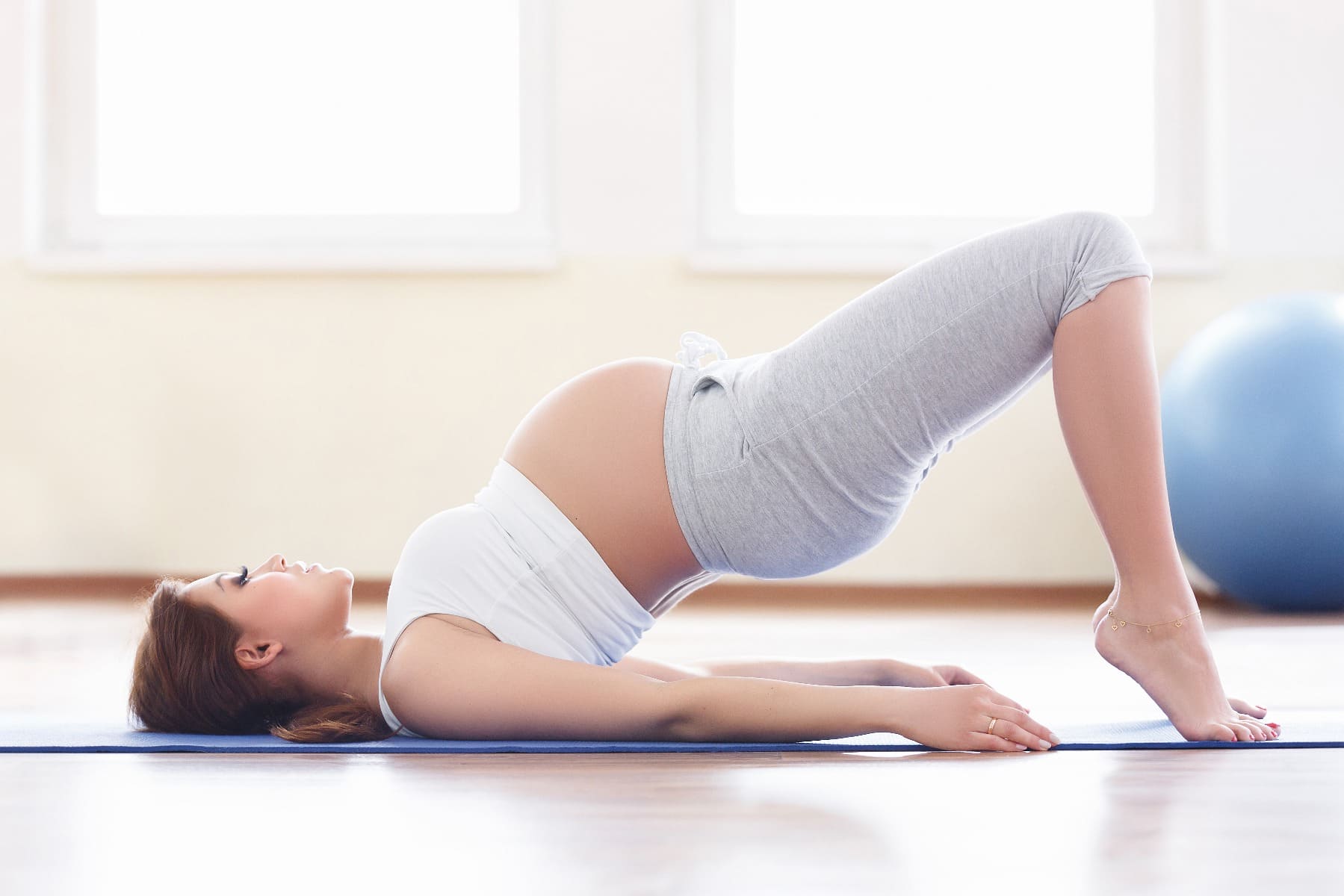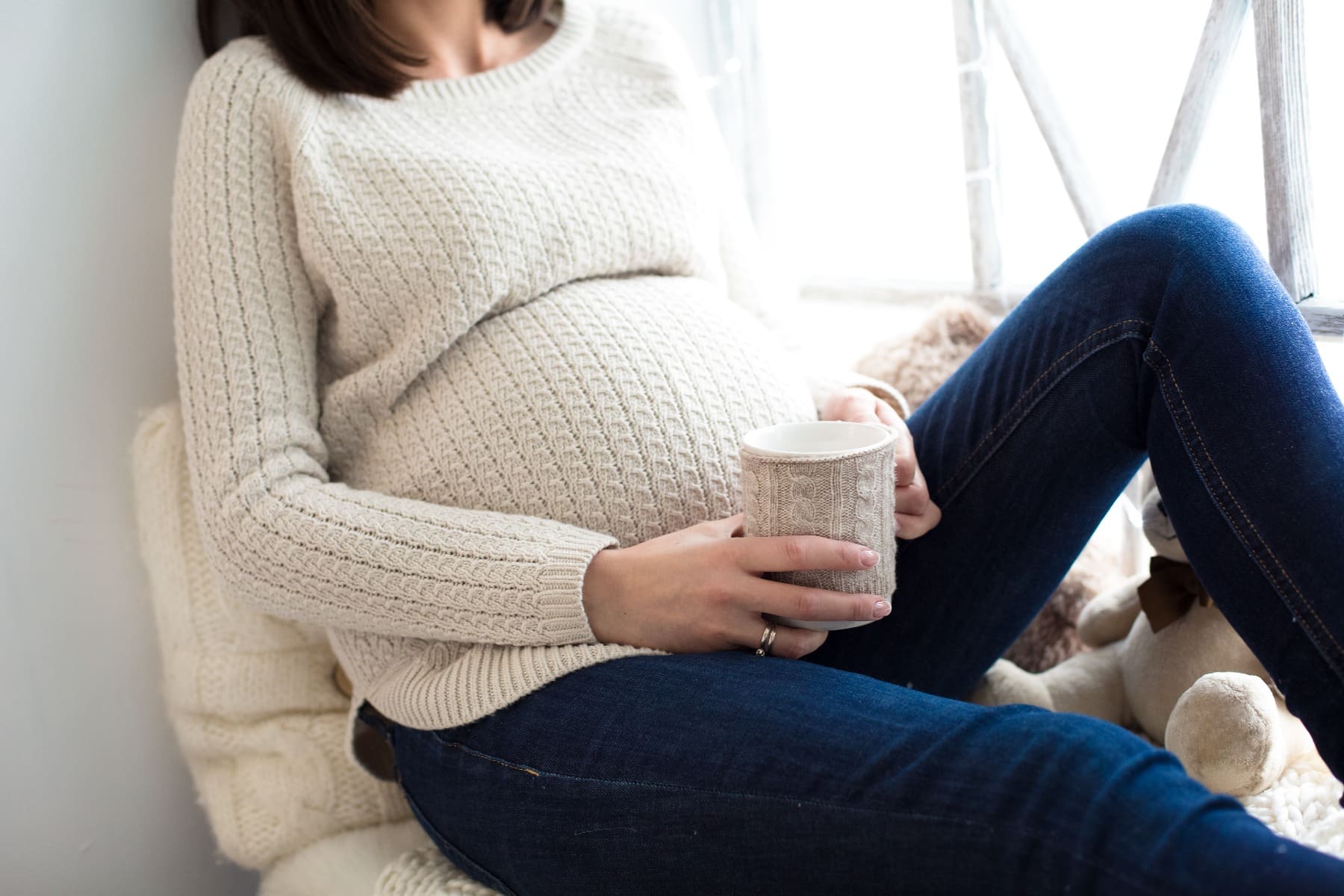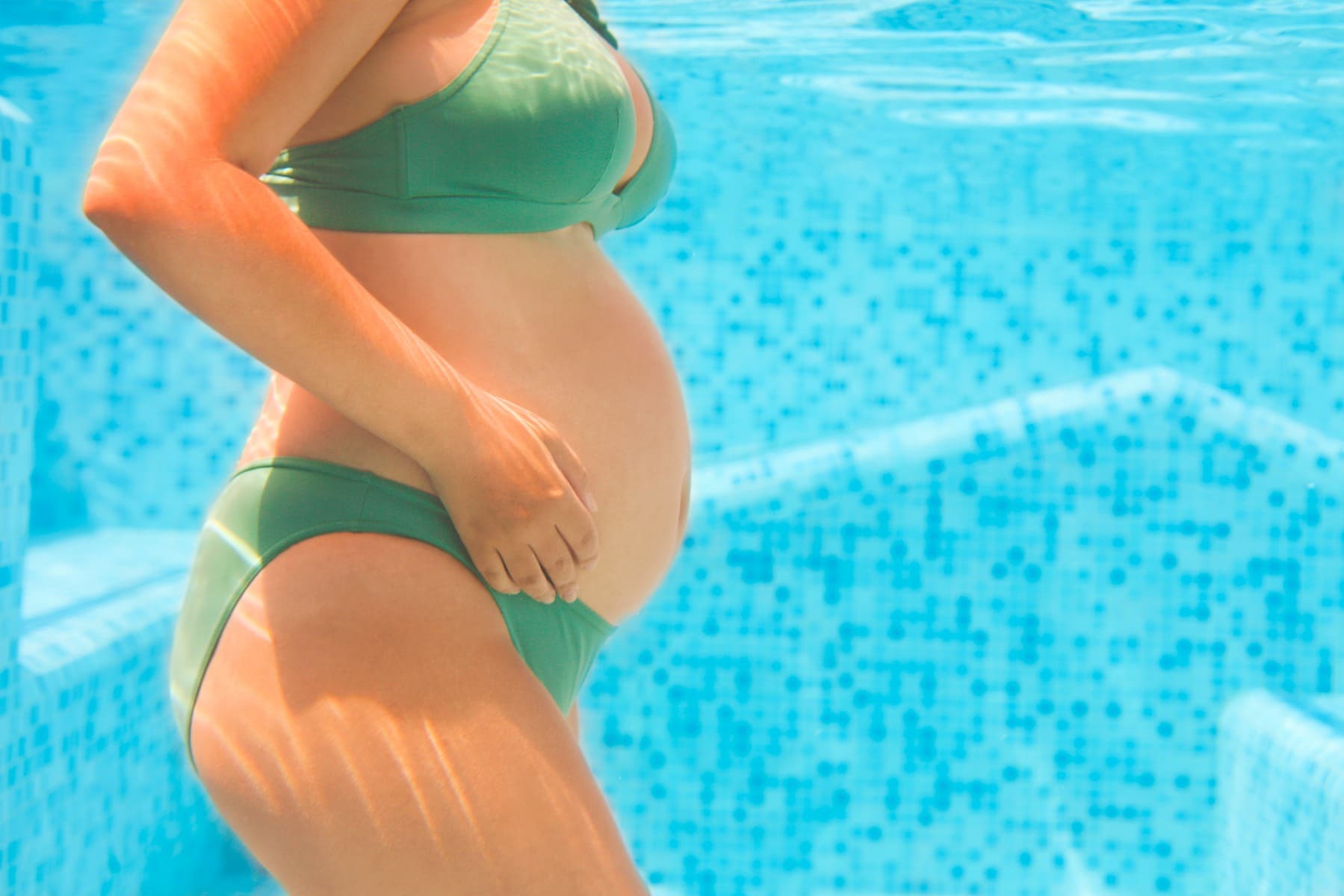Exercising your pelvic floor before and during pregnancy should be a top priority for expectant mothers. However, it's no surprise if you approach the intimate exercise with caution. Firstly, it's important to know which muscles you should be exercising. If you are unsure on how to locate your pelvic floor muscles, head over to our How To Find Your Pelvic Floor Muscles page.
Besides being good for you and your baby, working out during pregnancy can leave you feeling more energised. Read on to learn about the different exercises you should be doing throughout the course of your pregnancy.
How Do You Exercise Your Pelvic Floor During Pregnancy?
Kegels (otherwise known as pelvic floor exercises) are the leading prevention and treatment for all pelvic floor disorders. Despite their popularity, a Kegel8 study revealed that 50% of women did not know how to perform an effective pelvic floor exercise. We expect that most of the other 50% could improve their effectiveness as well!
There are two types of pelvic floor exercises that expectant mothers are encouraged to perform:
- Slow-Flex Kegels - This exercise helps your slow twitch fibres that are responsible for the control of your bladder in the long-term. Slow-flex Kegels help to improve stamina and the endurance of the muscles that stabilise your bowel, bladder, and uterus. To perform these, tighten your pelvic floor muscles for 1 second, and then relax. In practice, these slow Kegels can help you hold your bladder when you're not near a bathroom.
- Fast-Flex Kegels - This exercise aims to help your fast twitch fibres that 'fire' the pelvic floor into action when your bladder or bowel comes under pressure. Essentially, fast-flex exercises can help to prevent any embarrassing urinary or wind accidents. To perform, tighten your pelvic floor muscles and hold this position for 10 seconds, then relax. In practice, these fast Kegels are great to stop leaks when you laugh, cough, or sneeze.
How Often Should You Exercise Your Pelvic Floor During Pregnancy?
In order to maintain your strength, you should aim to carry out 10 slow Kegels and 10 fast Kegels, 5 times a day. If you follow this, you should see a gradual improvement of your pelvic floor strength within 12 weeks. You will soon learn that as your pelvic floor muscles grow stronger, you will be able to hold your Kegels for longer too! For more information on how to perform Kegels, visit our How to Do Pelvic Floor Exercises page.
If you find that you have a weak pelvic floor, try perfecting the slow exercises first, 6-10 times per day.
Please be aware that for ethical reasons the Kegel8 range of Electronic Pelvic Toners have not been tested on pregnant women, and therefore the impact of using an electronic pelvic toner during your pregnancy is unknown. As a result we recommend that you do your Kegel exercises manually throughout your pregnancy, and return to your Kegel8 Electronic Pelvic Toners after you have recovered from childbirth.
How Do You Know That Your Pelvic Floor Exercises Are Working?
If you're finding it hard to measure the results of your Kegels yourself, there are a variety of tools that help you track your pelvic floor progress. If you are exercising your pelvic floor manually, you can try squeezing against a resistance tool, such as a vaginal cone, to work your muscles harder.

You can also try squeezing against your finger, or your partner, and then you should be able to feel the muscles working. It's also worth remembering that prescriptions are free for new mums, and Kegel8 vaginal cones are available on prescription!
Biofeedback Tool
A biofeedback tool can help you exercise your pelvic floor muscles correctly and measure your improvement. Kegel8's Pelvic Trainer uses biofeedback to help you locate your pelvic floor muscles if you struggle to do so, and help exercise them correctly, helping them grow stronger.
Can Other Exercises Support Your Pelvic Floor?
In the UK, you are likely to discuss exercise during an antenatal appointment with your midwife. Traditional exercises, such as running, do not strengthen your pelvic floor. Instead high impact exercises actually cause damage to the pelvic floor and should be avoided throughout your pregnancy.
Traditional low impact exercises which also strengthen the surrounding muscles to work alongside the pelvic floor include:

- Yoga - A great way of increasing flexibility is through yoga. Studies from the University Hospital Dusseldorf show that pregnancy has a direct affect on spinal posture, creating that well-known pregnancy side-effect of lower back pain. Yoga can help to tackle this. Not only is it a great way of relaxing, but the increase in flexibility helps you to adapt to labour positions. Pain during labour can also be reduced as your ligaments will be more elasticated.
- Swimming - Swimming is a brilliant low impact exercise that is safe to do whilst pregnant, and it burns calories. The water will help to reduce pressure on your pelvic floor, and once you're heavily pregnant you'll soon appreciate the zero gravity.
- Squats - When performed correctly, squats work all major muscle groups. This high-calorie burning exercise increases flexibility in your lower body, making for a much easier delivery. Building up on your muscle will also prove beneficial when you have to carry around a pregnant belly.
Kegel8 have put together an essential guide to help you pick an exercise each week of your pregnancy.
Your Essential Guide to Exercise During Pregnancy
First Trimester

- Week 1 and 2 (Before Conception) - Yoga
Women who have the highest levels of stress-related enzyme in their saliva (called alpha-amylase) are 29% less likely to become pregnant than those with the lowest levels. Yoga is a great way to unwind and de-stress during this time. - Week 3-5 - Relax
Fatigue will truly hit you during your first trimester, as your body completes the huge task of manufacturing the placenta. You should listen to your body; if it's telling you to relax, then get plenty of rest. - Week 6 - Walking/Yoga
As your fatigue continues to take a toll on your body, it's hard to motivate yourself to exercise. Even if you take a walk, or go to a yoga class, the endorphins will lighten your mood and help you to sleep better. Just don't overdo it! - Week 7 - Kegels
The pregnancy hormone, hCG, is increasing the blood flow to your pelvic area which will affect your urine flow. As frequent urination becomes more prominent, ensure you practice your Kegels to prevent any embarrassing leaks. - Week 8 - Squats
Performing squats can help to strengthen and tone your thighs; during labour, they can even help your baby to descend. Hold the squat position for 10 to 30 seconds, and repeat 5 times. - Week 9-10 - Light-Moderate Exercise
By week 10, you may have been hit by constipation; to keep everything moving, do some light exercise, such as walking. - Week 11 - Yoga
Anxiety and depression can be a risk during pregnancy. Once-a-week yoga classes for 8 weeks is enough to reduce an expectant mother's risk of anxiety and depression, and lowers the chance of premature birth and postpartum blues. - Week 12 - Kegels
Building these bladder and uterus supporting muscles reduces your chance of bladder issues, and can help to ease other pregnancy and postpartum symptoms. Try and do 3 sets of 10 kegels throughout the day. - Week 13 - Light-Moderate Exercise
As your fatigue decreases, you may realise you have gained a newfound spark of energy. Try channelling this into a workout routine, just make sure you don't overdo it!
Second Trimester

- Week 14-16 - Walking
Varicose veins may become more prominent during your second trimester. These large, swollen blood vessels are caused by the extra blood volume that you produce to nourish your baby. Though you can not entirely prevent varicose veins, you can help to minimise them by walking throughout the day, helping the blood to circulate. - Week 17-18 - Light-Moderate Exercise
Take advantage of your burst of energy in the second trimester by engaging in some exercise. - Week 19-21 - Swimming
Keep your exercise low impact, with swimming, yoga, or walking. Thanks to ligament-loosening relaxant in your body, you are more susceptible to injury. - Week 22-23 - Meditation
Engage in a spot of pregnancy meditation to relax. Try sitting with your eyes closed and imagining a peaceful scene. Working up from your toes to your face, concentrate on relaxing each and every muscle. Breathe slowly and deeply through your nose, choosing one simple word (such as 'yes') to repeat aloud each time you exhale. After 10 to 20 minutes, you should feel a lot more relaxed. - Week 24-25 - Kegels
If you're beginning to feel pain in the pelvic area, you may be experiencing Symphysis Pubis Dysfunction (SPD). This is caused by now relaxed and stretchy ligaments that normally keep your pelvic joints aligned. Regularly practice your Kegels and pelvic tilts, which will strengthen your pelvic floor muscles. If the pain is severe, ask your practitioner for a referral to a physical therapist. - Week 26 - Daytime Exercise
Pregnancy insomnia can affect you during your second trimester. Try exercising during the day to help you tire out by nightfall. - Week 27 - Yoga For some expectant women, your legs can become tingling and jittery as a result of Restless Leg Syndrome (RLS). Consider trying yoga, or other relaxation techniques, to help the problem.
Third Trimester
- Week 31-32 - Prenatal Yoga
Backaches can make you feel super uncomfortable during your third trimester. If you haven't already, try to incorporate yoga into your exercise routine. The stretches will relax your back and mind. - Week 33-34 - Kegels
Constipation's side-kick, Hemorrhoids, can be kept at bay by doing Kegels. Pelvic floor exercises will help to improve circulation to the area. - Week 35 - Kegels
Practicing your pelvic floor exercises can help strengthen the pelvic muscles and prevent, or correct, most cases of pregnancy-induced incontinence. - Week 36-38 - Kegels
As you can tell, practicing your pelvic floor exercises are vital in your third trimester. Kegels can also help to relieve discomfort caused through pelvic pain. The pain occurs due to your joint flexibility, the pressure from your baby's head burrowing deeper into your pelvis, and your heavier uterus weighing you down. - Week 39-40 - Walking
Walking may help to induce labour naturally (ask your healthcare provider first).
Head over to Postnatal Exercise to learn about the types of exercise you can do after childbirth.
Sources
American College of Obstetrics and Gynecology (2015) Physical Activity and Exercise During Pregnancy and the Postpartum Period [online]. ACOG [viewed 09/08/2018]. Available from https://www.acog.org/Clinical-Guidance-and-Publications/Committee-Opinions/Committee-on-Obstetric-Practice/Physical-Activity-and-Exercise-During-Pregnancy-and-the-Postpartum-Period.
Betsch, M., Dor, L., Hakimi, M., Jungbluth, P., Rapp, W., Wehrle, R., Wild, M. (2015) Spinal Posture and Pelvic Position During Pregnancy: A Prospective Rasterstereographic Pilot Study. European Spine Journal. 24(6), pp. 1282-1288.
Hay-Smith, E.J.,Dumoulin, C. (2006). Pelvic floor muscle training versus no treatment, or inactive control treatments for urinary incontinence in women. Cochrane Database of Systematic Reviews. 25(1) .
Morkved, S., Bo, K. (2000). Effect of postpartum pelvic floor muscle training in prevention and treatment of urinary incontinence: a one-year follow-up. International Journal of Obstetrics and Gynaecology. 107(8), pp. 1022-1028.
Morkved, S., Bo, K. (2014). Effect of pelvic floor muscle training during pregnancy and after childbirth on the prevention and treatment of urinary incontinence: a systematic review. British Journal of Sports Medicine. 48(4), pp. 299-310.
National Childcare Trust (2014) Pelvic Floor Exercises How-To Guide: Pregnancy and Beyond [online]. NCT [viewed 06/08/2018]. Available from https://www.nct.org.uk/pregnancy/pelvic-floor-exercises-during-and-after-pregnancy.
Pelaez, M. et al. (2013). Pelvic Floor Muscle Training included in a pregnancy exercise programme is effective in the primary prevention of urinary incontinence: A randomized controlled trial. Neurology and Urodynamics. 33(1), pp. 67-71.
What To Expect (2018) Your Pregnancy Week-By-Week [online]. Ziff Davis [viewed 06/08/2018]. Available from https://www.whattoexpect.com/pregnancy/week-by-week/.




